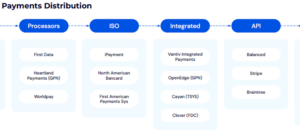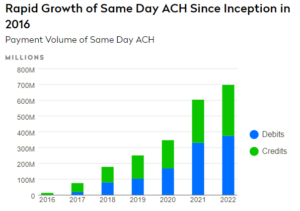As major financial institutions continue wading into the digital waters of the future of currency, they’re faced with questions that crypto, in many ways, has never really had to answer. What makes a digital asset a currency? What makes stablecoins stable?
Stablecoins are an increasingly important plank in the crypto system – greasing the wheels of the system and providing an easier method to move value around between tokens and exchanges in the broader universe of cryptocurrencies – a critical role in a highly fragmented marketplace. How could such coins be of use to a CBDC project– and what are the major risks? That was the topic for expert panelists at a recent session at the 2022 Chicago Payments Symposium.
“Central banks are concerned about having more efficient markets, be they retail payments markets or wholesale payment markets,” said Tony Richards, Retired Head of Payments Policy, Reserve Bank of Australia. “And if wholesale stablecoins are a new way providing a safe settlement asset, then I think that in general central banks will embrace that.
“Similarly, central banks haven’t had a problem with the concept of any money or stored values, so why should they have problem with retail stablecoins that are basically like stored value, but in a new technological form? I think the main concern for central banks is the financial stability one. And that’s – we’ve got to make sure stablecoins really are stable if they’re going to be used as money, particularly for high value transactions, but even in the day-to-day transactions of households, then it’s really important that they’d be stable, that they fully enact.”
It’s a critical check – and one that many things currently labeled as stablecoins can’t pass.
“We’re calling many things stablecoins that are not stable,” said Austin Campbell, Head of Portfolio Management, Paxos. “And as a crunchy old fixed income person who help put things back together after 2008, we’ve thought things were stable before and they’ve broken. And ironically, in many ways crypto is just speed running the history of finance, right? They’re making many of the same mistakes we’ve already made.
“And so I think one of the things we do need to do if we’re going to extract the maximum benefit for everybody is to get better at horizontally moving the lessons from one space to the others so that we don’t have to relearn them the hard way every single time and could really move forward at a faster pace.”
Stablecoins will likely continue to be an important piece on a meta-layer of the payments market – particularly for international transactions between markets – whatever shape those coins end up taking. For CBDCs, though, the solution is much less clear – and in some cases, it may not even involve a blockchain.
“If you wanted to get transactions with really short processing, really quick processing times and really high volumes, the blockchain isn’t the way to go,” Richards said. “So I would expect that retail CBDC might not want to use blockchains. Wholesale ones, they might will. At the moment, all the pilots are using existing blockchains. We’re discovering that there’s not quite as much decentralization as we thought there was supposedly in the world of DeFi. There are just new forms of intermediaries that rely on our signal articles, things like that.
“But I think from regulators, one important thing is that it’s obvious with blockchains, where’s the touch back, where’s the entity that regulators can get after if they have concerns about a blockchain. And so maybe they can’t go after them. But they might well be able to prevent their regulated entities from using those blockchains. And I think that’s probably the way that’ll work.”
For now, it’s still largely a thought experiment — while most experts agree we are moving towards a digital future, the time for CBDCs may still be years or even decades off. But in these early stages, these are the kinds of questions that will largely shape the infrastructure for the future.
“What is the role of public money in society?” said Dinesh Shah, Director of Fintech Research, Bank of Canada. “I think that’s still playing out. But my personal view is that it is important, that people should be able to have safe assets without going through all these different ways. And so one thing on universal access for us, Bank of Canada. Many other central banks, this idea of universal accessibility of CBDC, it’s actually some kind of first order thought, right? It’s designed. So regardless of circumstances — have a bank account, don’t have a back account, have a smartphone, don’t live in remote regions, in Canada, in lots of remote regions that are not well served..
“But those kinds of circumstances are pretty hard to incentivize the private sector to fill. So there is that gap if we look at it from the point of view of sort of use cases if you like. You can argue that there are other ways of solving that. We should present that right for people to have access to liability of at the state, right, to deal with their economic affairs.”
- ant financial
- Banking
- blockchain
- blockchain conference fintech
- CBDC
- chime fintech
- coinbase
- coingenius
- crypto conference fintech
- Cryptofinance
- fintech
- fintech app
- fintech innovation
- Fintech Rising
- Innovation
- OpenSea
- PayPal
- paytech
- payway
- plato
- plato ai
- Plato Data Intelligence
- PlatoData
- platogaming
- razorpay
- Revolut
- Ripple
- square fintech
- stablecoin
- stripe
- Technology
- tencent fintech
- xero
- zephyrnet









